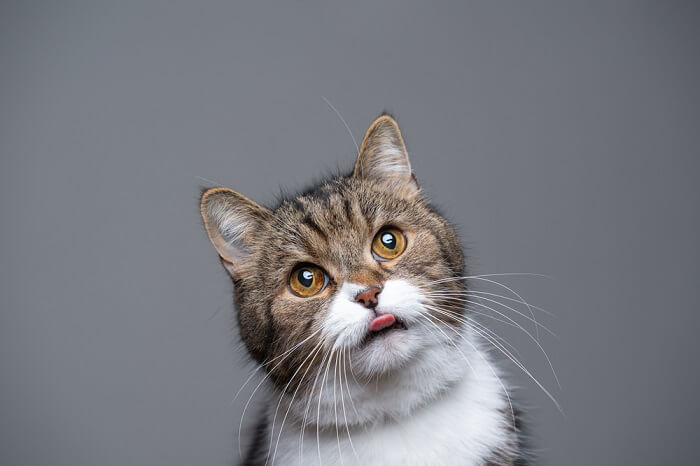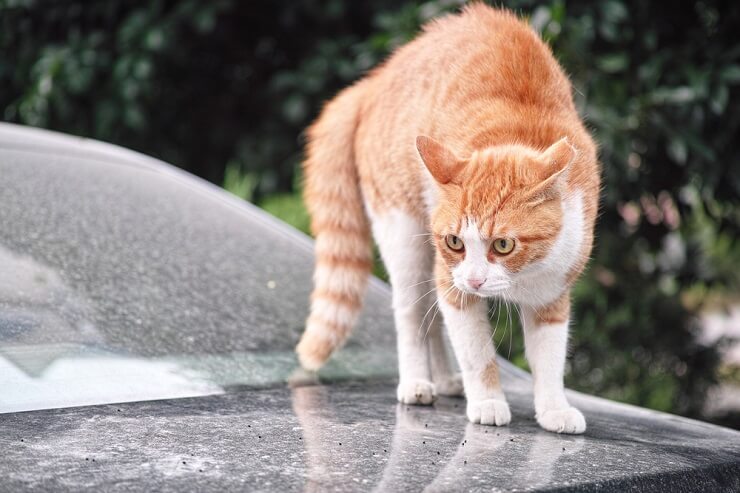Cat Nail Biting: Why Does My Cat Chew And Pull Its Nails?
This page contains affiliate links. We may earn money or products from the companies mentioned in this post through our independently chosen links, which earn us a commission.
Cats display a lot of strange behaviors, many of which we might not understand. Some of these behaviors might be alarming such as your feline eating non-food items or her being suddenly aggressive and could require veterinary attention.
But other feline behaviors are just cats being cats! A good example of normal feline behavior is claw pulling.
However, although you might have seen your feline chew or pull her claws out you might not understand the reason behind it. In fact, a common question we often get from concerned cat parents is, “why does my cat chew and pull his nails? “
In this article, we look at the some of the possible reasons behind your cat’s nail biting behavior and the action you need to take if you’re concerned by this behavior.
1. Grooming
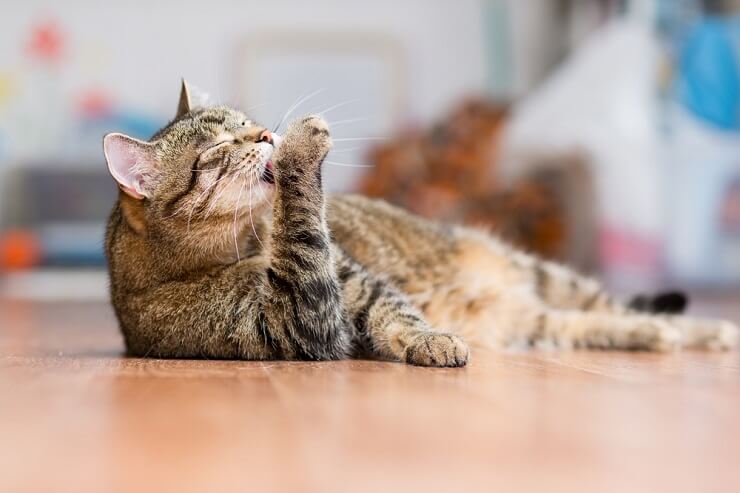
Cats are meticulous groomers and nail biting and pulling is part of normal cat grooming behavior.
When your feline is grooming herself, she will lick her paws to remove dirt and other debris stuck between her claws. If the licking doesn’t get her nails clean, your furball may resort to gently chewing or pulling at her nails.
Other times, your feline may bite her nails to help remove the outer layer. Cat claws usually grow in layers. These layers wear out from time to time and by pulling the old outer layer off , your feline is left with a cleaner and sharper nail underneath.
Normally, cats can keep their nails clean without chewing or pulling them out. When a cat has a surface to scratch on, she will often use it to keep her claws well-maintained. But if a scratching surface is not available, your cat may turn to her teeth to pull out worn and chipped nails.
It is advisable to provide your cat with a scratching surface to help her naturally shed her claws and discourage her from having to pull her claws herself when grooming. For instance, you can get your furball a scratching post, cardboard scratcher, or a rough fabric to help keep her claws clean.
2. Self-Soothing Behavior
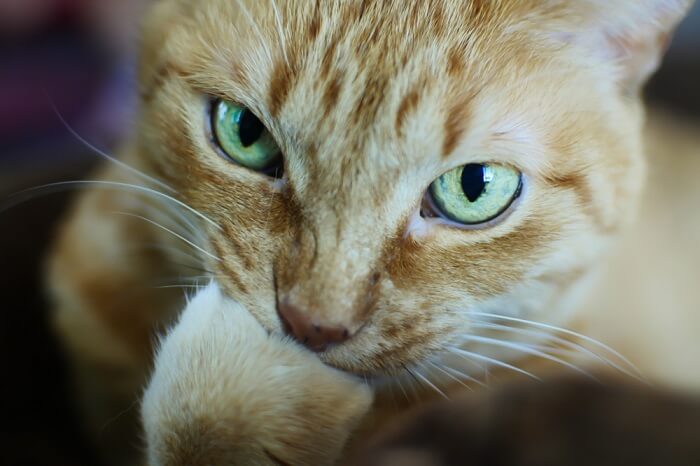
Cats just like human beings get bored and lonely. In such instances, your cat may resort to obsessive behavior. Examples of obsessive behavior in cats include aggressive paw licking, continuous surface scratching, or excessive claw chewing.
Cats will engage in such behaviors as a self-soothing mechanism to help cope with a situation they aren’t comfortable with.
To help your feline overcome boredom and loneliness, you should try and spend more time bonding and playing with her. Also, have a routine that your cat can get accustomed to as cats thrive in an environment that is predictable.
3. Anxiety
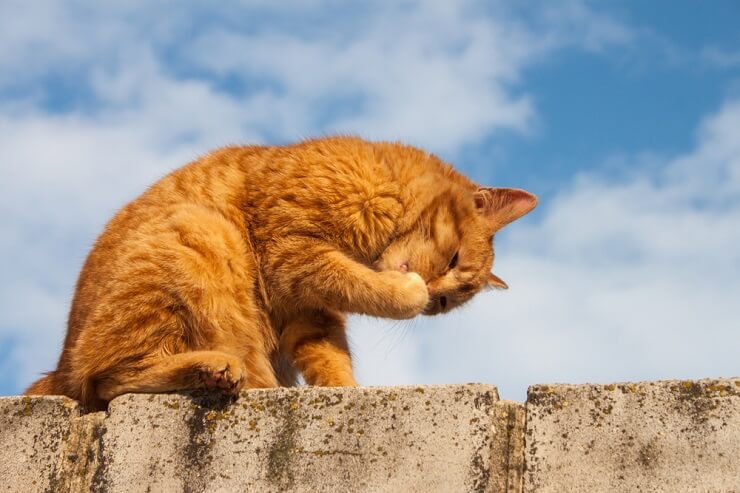
Just like people who chew their nails, excessive nail chewing in cats can be associated with anxiety. For instance, claw biting may be observed in a cat that has recently been moved to a new environment. Also, your cat may chew and pull out her nails if you have just introduced a new pet to the family. Other causes of anxiety may be loneliness when you leave your cat alone for too long or because of fights with other pets in your home.
To lessen anxiety in your feline, you’ll need to deal with the underlying cause. For instance, in a multi-pet household, setting up different spaces for the animals such that they don’t have to share resources like food bowls and litter trays can reduce fights. Providing your indoor cat with plenty of mental stimulation can reduce her anxiety when you aren’t in the house.
Appeasing pheromones such as Feliway can be useful for stressed animals making your home more cat-friendly. Medication can also help calm your anxious cat down in some circumstances. Consult your vet to determine the type of mood stabilizing medication to give your cat.
4. Medical Conditions
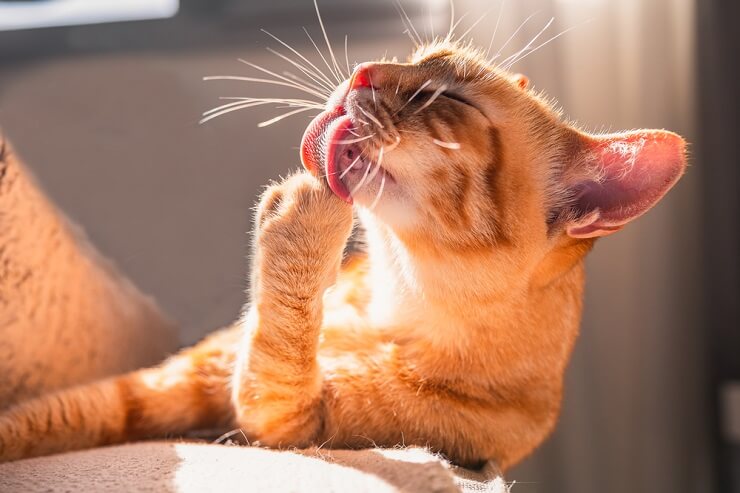
Chronic nail biting may also be caused by an underlying medical condition.
Some common cat illnesses that can lead to excessive claw chewing and pulling include:
- Yeast Infection – In cats, yeast (Malassezia) infection can can occur on the paws and in the ears. Yeast can be very itchy which may cause your cat to scratch and pull out their claws. The most common signs that your cat has a yeast infection include dark brown waxy debris in the claw folds, discoloration of the claw, and a smelly discharge from lesions on the skin. Ensure you take your cat to the vet as the only way to treat the yeast infection is through appropriate medication .
- Ringworm – Ringworm is a fungal infection that occurs when your cat gets into contact with an infected pet. Common symptoms of ringworm infection include circular red spots on the skin where hair has fallen off, crusty skin,excessive scratching as well as infected claws and nailbeds. Again, take your cat to the vet if you suspect they have ringworm.
- Pemphigus – Pemphigus is an uncommon autoimmune skin disease in cats characterized by crusts around your pet’s paws, face, and toenails beds. , This may lead her to bite and scratch the affected areas due to pain. Ensure you take your pet to the vet so she can receive the medical attention she needs.
- Injury – An injured or painful claw may be causing your furball discomfort leading to excessive nail pulling. For instance, if you cut your cat’s nails too deep you could injure her and introduce infection. We advise that you always inspect your cat’s paws for any injury that may need medical attention.
- Age – On other occasions, thickening of an older cat’s nails might cause her to chew the paws in an aggressive manner. As cats grow older, their claws grow thicker and harder without shedding off older layers. If not trimmed, the claws can become overlong, even curling round, and growing into your cat’s footpad, causing pain and infection.
Conclusion
In most cases there is usually no cause for alarm when your cat bites her nails. It only becomes a problem when the behavior becomes obsessive.
Many Cats may pull and chew at their nails as part of their normal grooming routine. However, in some instances excessive claw pulling may be an indication that your feline has an injury or infection. Look out for abnormal nails, red spots, swelling, cracked, or bleeding paws and take your pet to the vet.
Similarly, pay close attention when your cat’s claw pulling behavior is accompanied by other out of the ordinary behaviors such as loss of appetite, hiding for no reason, and aggression. This could be a sign that your cat has a psychological or other medical problem that needs treatment.
Frequently Asked Questions
Why does my cat bite and pull his nails?
There are many reasons why your cat may bite and pull his nails. For starters, claw biting and pulling is normal grooming behavior and often happens when your cat is trying to remove dirt or when he is removing the outer layer of his claw.
Your feline may also resort to pulling his nails as a self-soothing behavior when he is lonely, bored, or anxious. Excessive nail biting and pulling may also be indicative of a medical condition that requires immediate treatment, so get your cat checked out by a vet if you aren’t sure.
Is it normal for cats to bite their nails?
Yes, it’s normal for cats to bite their nails. But excessive nail biting in your feline may be an indication of an underlying medical or psychological condition that requires immediate attention.
Can cats trim their own nails?
Cats can keep their nails in order by using scratch posts to keep them sharp and clean. However, your feline may benefit from an occasional nail trim from you, especially if their claws are overlong or becoming thickened with age. Just make sure you don’t cut your cat’s nails too short such that they end up with an injured claw.
How do you get your cat to stop biting their nails?
You’ll need to find out why your cat is biting their nails in the first place. If they’re doing it as part of their grooming routine then providing your feline with a scratching surface will help.
If your cat is engaging in excessive nail biting as a self-soothing mechanism, you’ll need to identify why your cat might be anxious, lonely or bored and deal with the reasons behind this. Obsessive nail biting due to a medical condition can be solved by seeking treatment from your vet.


